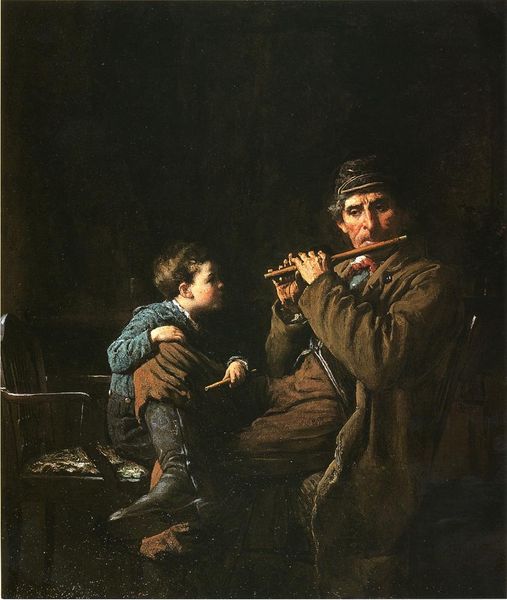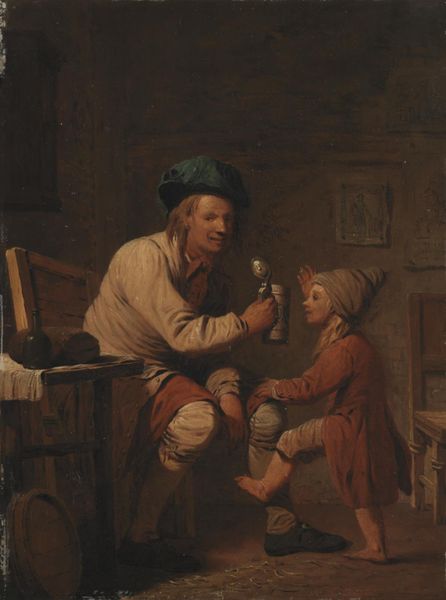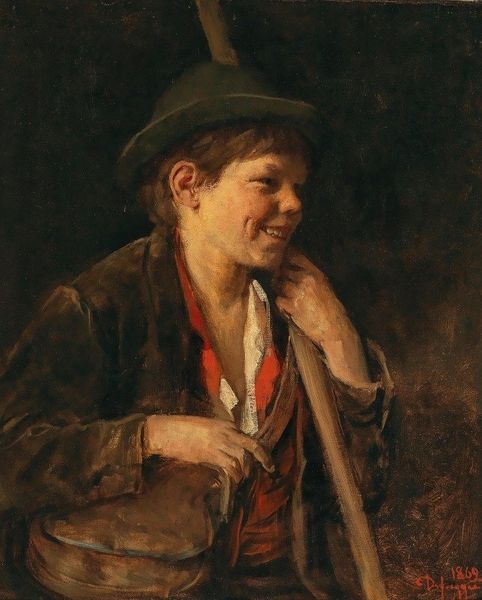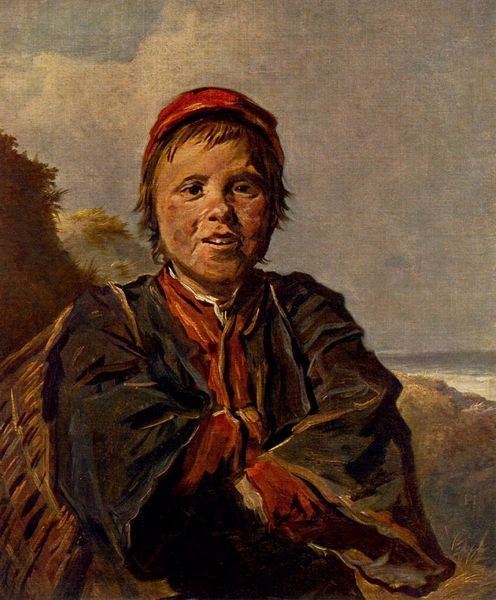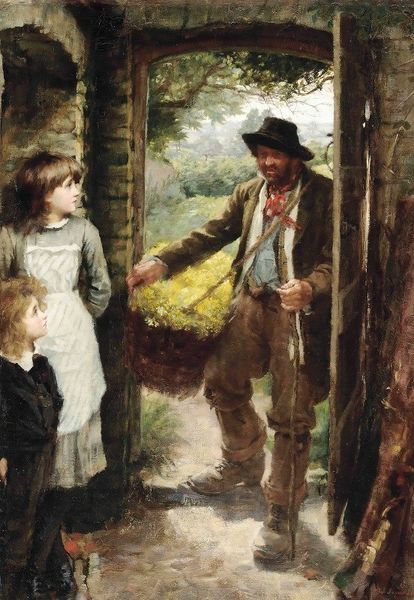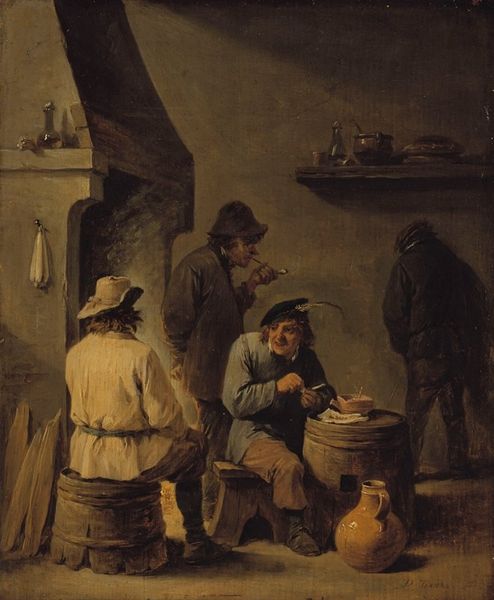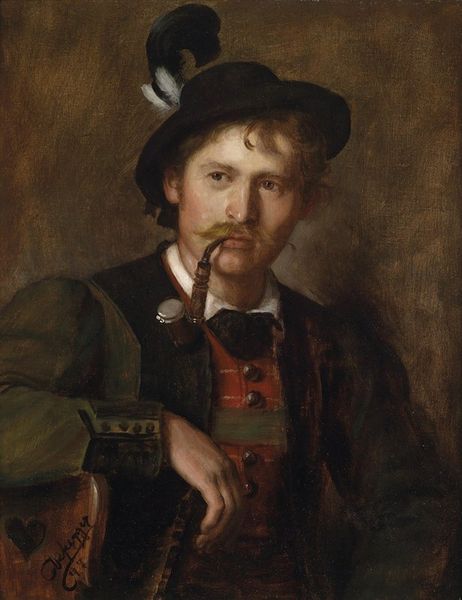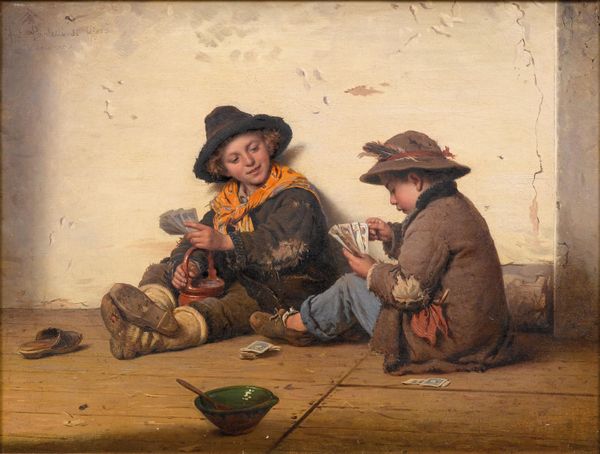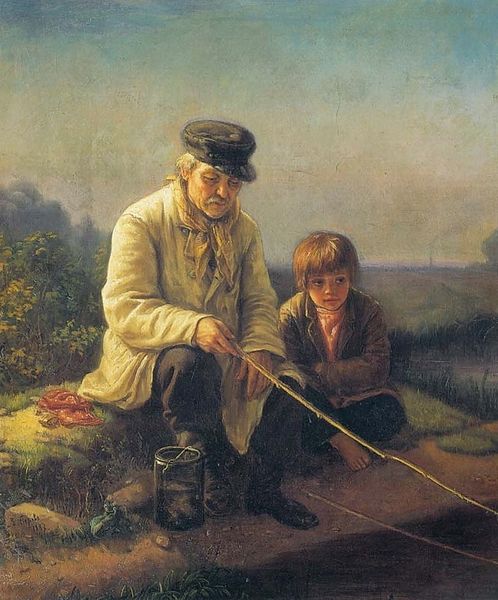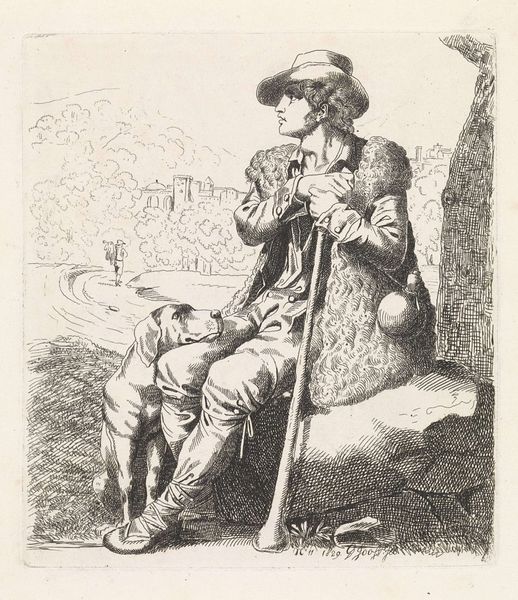
painting, oil-paint
#
portrait
#
figurative
#
painting
#
oil-paint
#
group-portraits
#
romanticism
#
genre-painting
Copyright: Public Domain: Artvee
Curator: Let’s consider Ferdinand Georg Waldmüller’s painting, "Taglöhner mit seinem Sohn," or "Day Laborer with His Son," crafted in 1823. It’s a rather intimate genre scene rendered in oil paint. Editor: There’s a palpable sense of weariness, isn't there? The man's clothing looks patched, but his gaze holds a surprising amount of… acceptance. A quiet dignity in the face of hardship. Curator: Absolutely. Waldmüller often portrayed the lives of common people. His works provided visual records and commentary on societal conditions. There's this romantic interest in the simple life, but is it uncritical? Editor: That’s where it gets complex, doesn't it? It can appear romanticized, sure, even sentimental. But consider the time— the era following the Napoleonic wars brought widespread economic distress. Presenting the struggles of rural populations forces the rising middle class of the time to consider labor and inequity. Curator: Indeed, it brings questions about the patron looking at this portrait—what social circles did Waldmüller intend to reach? How would such paintings reflect upon his artistic identity, considering Vienna’s socio-political backdrop? Editor: Precisely. We are invited to acknowledge this individual's labor, to maybe even see beauty or humanity within a group often overlooked or dehumanized by societal structures. Look at the son sharing what seems to be the last bite of the loaf. Curator: I'm drawn to the detail of the father’s pipe and the son’s almost shy, yet optimistic, expression. Waldmüller doesn't shy away from showing a glimmer of warmth, of family connection, even when resources are limited. Editor: Exactly. And even within its historical context, the piece resonates today—prompting conversations about economic disparities, the dignity of labor, and familial resilience. The boy's small copper is a telling detail—the father seems more than happy to offer it to his son, perhaps it is more valuable to see the boy have it. Curator: I agree, revisiting Waldmüller’s paintings prompts reflections about art's capability to portray not just historical, but evergreen realities of human relationships under socioeconomic pressure. Editor: Ultimately, “Day Laborer with His Son” is an intimate portal to historical empathy. Its subjects and emotional currents endure.
Comments
No comments
Be the first to comment and join the conversation on the ultimate creative platform.
